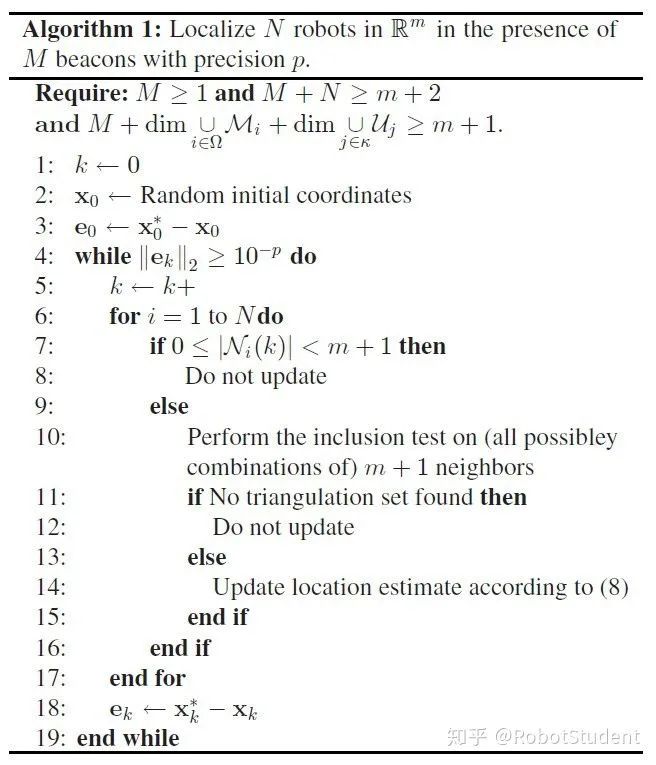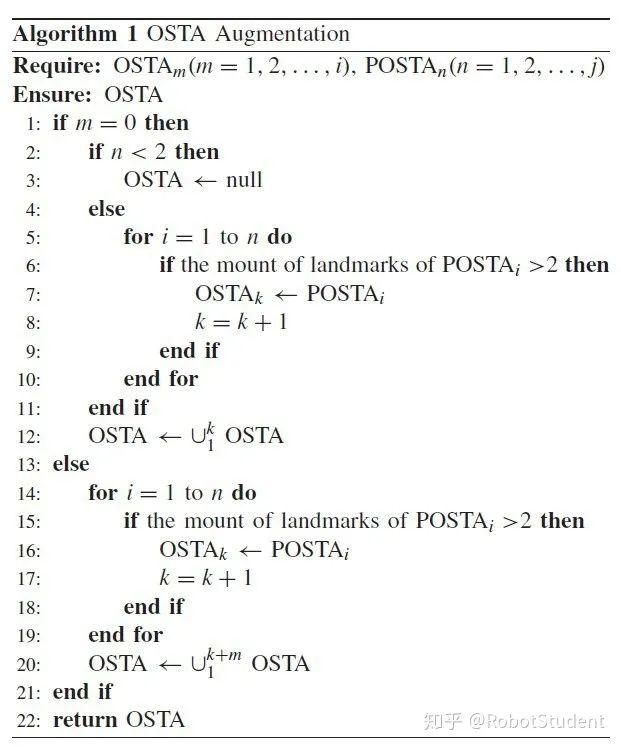對(duì)于移動(dòng)機(jī)器人,定位技術(shù)是保證移動(dòng)機(jī)器人軌跡/運(yùn)動(dòng)作業(yè)的前提技術(shù),特別是跟蹤作業(yè)的基礎(chǔ)。
與自動(dòng)駕駛車(chē)輛定位不同,小型移動(dòng)機(jī)器人更需要的是定位精度。根據(jù)作業(yè)環(huán)境,小型移動(dòng)機(jī)器人定位技術(shù)可以視為室內(nèi)定位系統(tǒng)(Indoor Location System, ILS)。小型移動(dòng)機(jī)器人定位技術(shù)不同于機(jī)械加工領(lǐng)域的定位技術(shù),從關(guān)鍵詞上可以明顯區(qū)別“Location/Localization”與“Position/Positioning”。Localization 指的是機(jī)器人在作業(yè)空間內(nèi)的自身的位置關(guān)系問(wèn)題,position 是會(huì)指向更精密的點(diǎn)問(wèn)題。
本文的主要內(nèi)容包括:室內(nèi)定位測(cè)量原理(物理屬性)[1],室內(nèi)定位技術(shù),定位模型方法,定位算法,定位系統(tǒng)評(píng)價(jià)因子,基于慣導(dǎo)的定位系統(tǒng),基于無(wú)線電網(wǎng)絡(luò)的定位技術(shù),集群定位算法。
室內(nèi)定位測(cè)量原理

無(wú)線電頻譜與電磁波
(1)個(gè)人或區(qū)域互聯(lián)網(wǎng),包括IEEE 802.11, Ultra-Wideband (UWB),ZigBee, 或者 Bluetooth。
采指紋基定位方法
鄰近技術(shù)
貝葉斯統(tǒng)計(jì)匹配
極大似然估計(jì)
關(guān)聯(lián)判決(Correlation discriminant kernel selection)
非采指紋基定位方法
幾何學(xué)
(2)區(qū)域廣播網(wǎng)絡(luò),包括定位目的的網(wǎng)絡(luò),例如GPS/GNSS,以及具有定位功能多的網(wǎng)絡(luò),例如智能手機(jī)網(wǎng)絡(luò)、電視廣播信號(hào)。
電視信號(hào)
(3)?RFID 標(biāo)簽 (4)雷達(dá) 光子能場(chǎng) (1)圖像分析,自然特征提取與識(shí)別(場(chǎng)景圖片)
移動(dòng)相機(jī)系統(tǒng)
固定相機(jī)系統(tǒng)
(2)圖像分析與特征點(diǎn)標(biāo)記(二維碼定位)
此外,還有聲波、機(jī)械能(慣性/接觸)、地球磁場(chǎng)、大氣壓。

無(wú)線電室內(nèi)定位系統(tǒng)分類(lèi)[2]
室內(nèi)定位技術(shù)
室內(nèi)定位服務(wù)系統(tǒng)Indoor Location Based Services (ILBS)可以簡(jiǎn)單地分為三類(lèi)[3]:
1、網(wǎng)絡(luò)系統(tǒng):基于無(wú)線網(wǎng)絡(luò)
2、慣性系統(tǒng):機(jī)載慣導(dǎo)系統(tǒng)預(yù)估定位
3、混合系統(tǒng):融合無(wú)線網(wǎng)絡(luò)與慣性系統(tǒng)的混合系統(tǒng)
RSS-IMU 混合系統(tǒng)
基于地圖的混合系統(tǒng)
基于智能手機(jī)的混合系統(tǒng)
室內(nèi)定位模擬方法分類(lèi)
1、angle of arrival(AoA) 技術(shù):根據(jù)到達(dá)信號(hào)角度
2、time of arrival(ToA) 技術(shù):根據(jù)到達(dá)信號(hào)時(shí)間(類(lèi)似雷達(dá)測(cè)距)
3、fingerprinting 技術(shù),即特征技術(shù)

? ?
室內(nèi)定位模擬算法
1、三角定位(Triangulation),需要借助固定基站或者已知基站位置信息,GPS等無(wú)線網(wǎng)絡(luò)定位法。
2、鄰近(Proximity), 使用具有有限的感知范圍和分析能力的傳感器,RFID。
3、場(chǎng)景分析(Scene analysis),利用場(chǎng)景畫(huà)面中的特征完成定位分析,點(diǎn)云和3D重構(gòu)技術(shù),機(jī)器視覺(jué)。
4、航位推算(Dead reckoning),基于先驗(yàn)信息推算出運(yùn)動(dòng)軌跡,慣導(dǎo)、捷聯(lián)慣導(dǎo)。
定位算法
按照文獻(xiàn)[5],基于靜態(tài)傳感器節(jié)點(diǎn)的定位技術(shù)廣泛應(yīng)用于移動(dòng)機(jī)器人跟蹤功能,定位算法可總結(jié)為:

1、范圍基定位(Range-based localization)
time-of-arrival (TOA) – based 定位. 聯(lián)合最小二乘估計(jì)?the Least-Square Estimate
time-difference-of-arrival (TDOA) – based 定位. 協(xié)同定位
Angle-of-arrival (AOA) – based 定位.
received signal strength (RSS) – based 定位,聯(lián)合最大似然估計(jì)Maximum likelihood estimate
MDS Based 定位,聯(lián)合奇異值分解 Singular Value Decomposition (SVD)
Channel Impulse Response Based fingerprinting 定位
2、無(wú)范圍基定位(Range-free localization)
Approximate Point in Triangle Test (APIT)
Centroid-based 定位
Monte-Carlo 定位
DV-Hop based 定位
Closer point based 定位
Based Coordinates (ABC) localization method
定位計(jì)算補(bǔ)償方法Implementation methods
1、機(jī)器學(xué)習(xí)方法?Machine Learning Based Methods:
least square support vector machine and Gaussian processes ,Semi-supervised Laplacian regularized least squares method and HMM based RSS-EKF (Extended Kalman Filter) method using RSS
2、集中和分布式方法Centralized and Distributed Methods
3、多傳感器數(shù)據(jù)融合方法Multi-Sensor Data Fusion Methods
4、采指紋方法Fingerprinting Based Methods
跟蹤算法分類(lèi)(Broad classification of tracking methods):

1、聚類(lèi)跟蹤算法?Cluster-based tracking methods, dynamic clustering algorithm for target tracking
2、預(yù)測(cè)跟蹤算法?Prediction-based tracking methods
3、樹(shù)基跟蹤算法?Tree-based tracking methods
4、主動(dòng)跟蹤算法?Activation-based tracking method
5、Mobicast基跟蹤算法?Mobicast-based tracking method
室內(nèi)定位方法評(píng)價(jià)
1、精度與誤差
2、環(huán)境適應(yīng)性。場(chǎng)景對(duì)定位系統(tǒng)測(cè)量精度影響,一個(gè)高性能框架能夠避免對(duì)重復(fù)定位差異
3、消耗:帶寬、壽命、能耗、權(quán)重與額外設(shè)備
4、基站數(shù)量
基于慣導(dǎo)的定位系統(tǒng)
慣性導(dǎo)航與定位技術(shù)可以分為兩類(lèi):
捷聯(lián)慣導(dǎo)系統(tǒng)Strapdown systems: 采用兩次積分預(yù)測(cè)運(yùn)動(dòng)
步進(jìn)與航向系統(tǒng)Step and Heading Systems (SHS): 通過(guò)表示步進(jìn)長(zhǎng)度與航向的慣性定位向量預(yù)測(cè)位置
參考下圖,慣導(dǎo)定位系統(tǒng)通過(guò)二次積分獲得定位信息[6]

一個(gè)經(jīng)典的具有定位功能的移動(dòng)機(jī)器人控制系統(tǒng)架構(gòu)如下圖所示,該系統(tǒng)通過(guò)無(wú)線電、里程計(jì)以及慣性測(cè)量單元實(shí)現(xiàn)自定位功能[7]。

微型慣性測(cè)量單元,包括陀螺儀、加速度計(jì)、磁偏角計(jì)、溫度和氣壓等功能,通過(guò)物理模型和誤差模型推算。

擴(kuò)展卡爾曼濾波算法EKF與粒子濾波器是移動(dòng)機(jī)器人群體定位中最為廣泛,尤其在RoboCup等機(jī)器人大賽[7]。
基于無(wú)線電定位系統(tǒng)
最流行的室內(nèi)無(wú)線電點(diǎn)位技術(shù)方法為RSSI定位算法,是采用AP終端設(shè)備組件的網(wǎng)絡(luò),通過(guò)檢測(cè)信號(hào)功率推算距離,再利用定位模型獲取定位信息,最常見(jiàn)的終端是ZigBee。

參考[8]

基于ZigBee組件的微型定位系統(tǒng)
集群定位系統(tǒng)
參考文獻(xiàn)[9][10],集群類(lèi)機(jī)器人定位技術(shù),不僅可以依靠靜態(tài)基站進(jìn)行定位,還可以利用機(jī)器人之間無(wú)線電終端輔助其它終端進(jìn)行定位。

算法1 [9]
因?yàn)榧憾ㄎ淮嬖诤艽蟮脑肼暩蓴_,因此需要對(duì)采集到的信息進(jìn)行去噪處理,或者提高系統(tǒng)抗干擾能力,采用統(tǒng)計(jì)算法提高定位系統(tǒng)精度。如在文獻(xiàn)[10],采用了卡爾曼濾波器對(duì)定位優(yōu)化。

文獻(xiàn)[10]-算法1

文獻(xiàn)[10]-算法2

文獻(xiàn)[10]-算法3
總結(jié)
本文大部分內(nèi)容是根據(jù)綜述文章對(duì)現(xiàn)用的室內(nèi)定位進(jìn)行總結(jié),考慮到微型運(yùn)動(dòng)機(jī)器人的工程成本以及計(jì)算力,本文所討論的室內(nèi)定位技術(shù)并不是應(yīng)用于自動(dòng)駕駛的SLAM和VSLAM技術(shù)。
同時(shí),本文提到了定位跟蹤技術(shù),在尋跡控制中個(gè)人傾向采用視覺(jué)方向。對(duì)于粗精度的定位系統(tǒng),可以采用基于ZigBee的RSSI定位系統(tǒng),此外可以融合IMU單元提高系統(tǒng)定位精度。
參考文獻(xiàn):
[1] Torres-Solis, J., H., T., and Chau, T., 2010, “A Review of Indoor Localization Technologies: Towards Navigational Assistance for Topographical Disorientation,”?Ambient Intelligence, F.J. Villanueva Molina, ed., InTech.
[2] Kivim?ki, T., Vuorela, T., Peltola, P., and Vanhala, J., 2014, “A Review on Device-Free Passive Indoor Positioning Methods,” International Journal of Smart Home,?8(1), pp. 71–94.
[3] Alejandro Correa, Marc Barcelo, Antoni Morell, and Jose Vicario, 2017, “A Review of Pedestrian Indoor Positioning Systems for Mass Market Applications,” Sensors,?17(8), p. 1927.
[4] Mrindoko, N. R., and Minga, D. L. M., 2016, “A Comparison Review of Indoor Positioning Techniques,”?21(1), p. 9.
[5] Kumar, S., and Hegde, R. M., “A Review of Localization and Tracking Algorithms in Wireless Sensor Networks,” p. 12.
[6] Lv, W., Kang, Y., and Qin, J., 2019, “Indoor Localization for Skid-Steering Mobile Robot by Fusing Encoder, Gyroscope, and Magnetometer,” IEEE Transactions on Systems, Man, and Cybernetics: Systems,?49(6), pp. 1241–1253.
[7] Li, D., Chen, Q., and Zeng, Z., 2018, “Self-Localization Algorithm of Mobile Robot Based on Unscented Particle Filter,”?2018 37th Chinese Control Conference (CCC), IEEE, Wuhan, pp. 5459–5464.
[8] Hernández, N., Alonso, J. M., and Oca?a, M., 2017, “Fuzzy Classifier Ensembles for Hierarchical WiFi-Based Semantic Indoor Localization,” Expert Systems with Applications,?90, pp. 394–404.
[9] Safavi, S., and Khan, U. A., 2017, “An Opportunistic Linear–Convex Algorithm for Localization in Mobile Robot Networks,” IEEE Transactions on Robotics,?33(4), pp. 875–888.
[10] Sun, Q., Tian, Y., and Diao, M., 2018, “Cooperative Localization Algorithm Based on Hybrid Topology Architecture for Multiple Mobile Robot System,” IEEE Internet of Things Journal,?5(6), pp. 4753–4763.
編輯:黃飛
?
 電子發(fā)燒友App
電子發(fā)燒友App





























評(píng)論